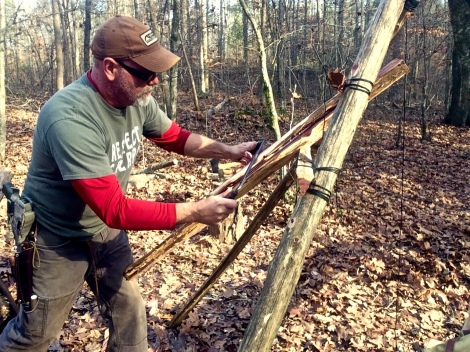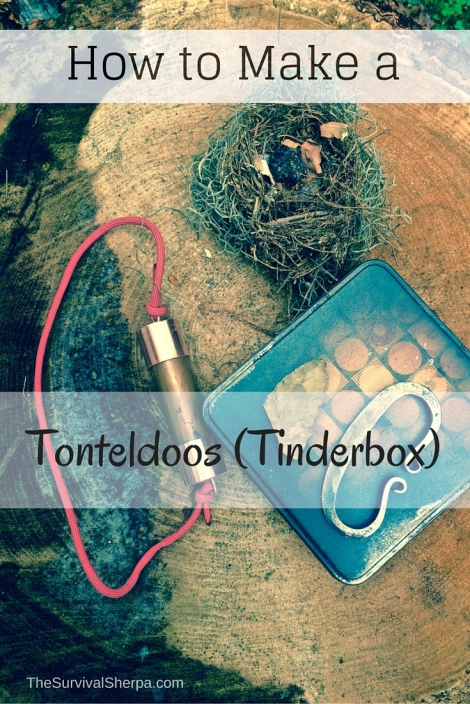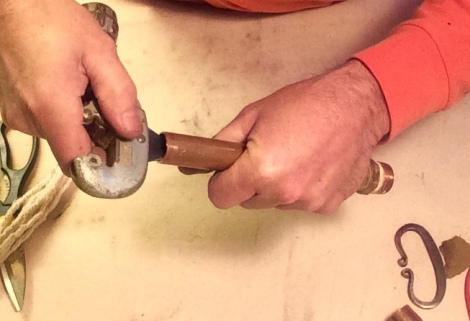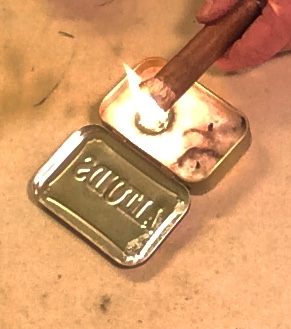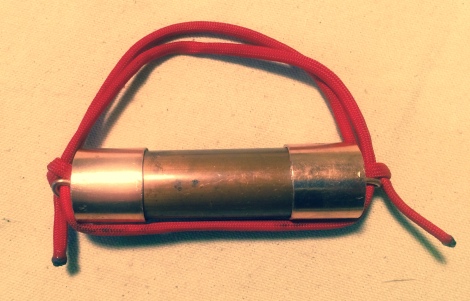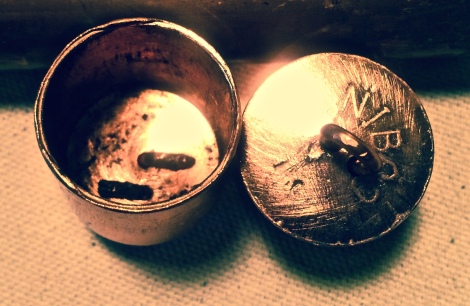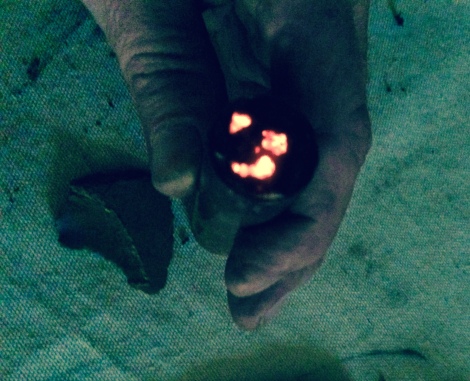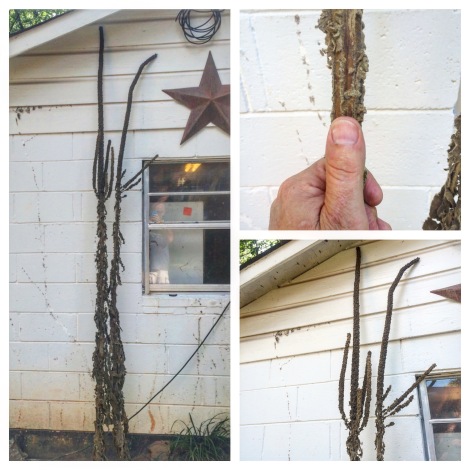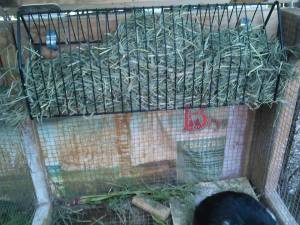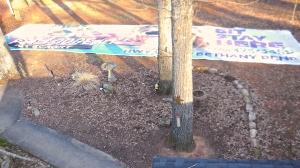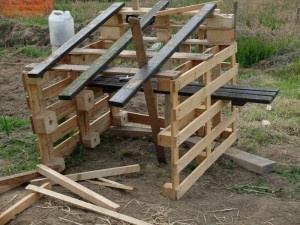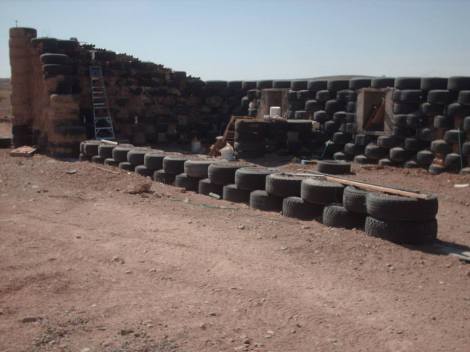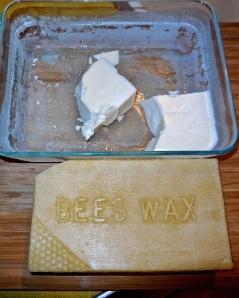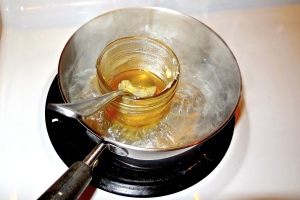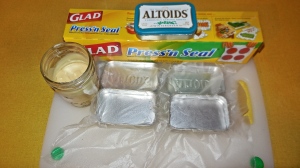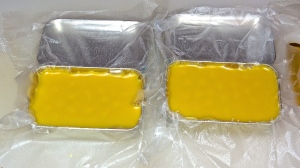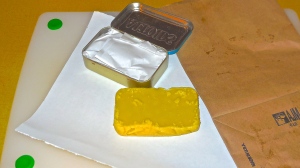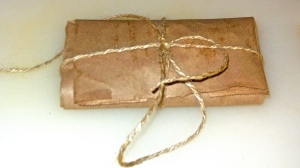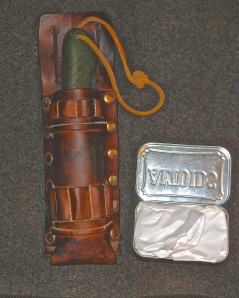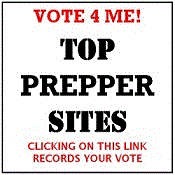by Todd Walker
At our spring Georgia Bushcraft campout, Chris Noble began his Plant I.D. class with seven wise words written on the white board…
“Plants are what the real food eats!”
Wild edibles are popular among survivalists and outdoorsy types. Would you survive the learning curve if you were dependent on wild food only?
We have several articles parked on our Foraging Feral Food page. However, foraging is a hobby of mine and is used to supplement my diet and knowledge base. The supplementary part (knowledge) is what the average person, like myself, should concentrate on when learning to forage. More specifically, which plants are favorites of your local Real Food (animals)?
The idea of long-term survivability as a vegan without our modern food delivery system would be, in my mind, starving times. Even omnivores would be hard pressed to feed their family if semi-trucks stopped rolling. If you’re reading as a vegan, this is not a slam on your food choices. I have nothing against vegetarians or vegans… except for the occasional radical who bashes bacon. In my wild foraging experience, learning to safely identify wild edibles takes time, experience, and preferably guidance from someone with actual expertise in the field. This is not to say living off the landscape can’t be done by hobby foragers. It’s just unlikely.
Crop cultivation signaled the beginning of the end of our hunter-gatherer lifestyle 10,000 years ago. Today, the domestication of our species seems to be complete… almost. Our wild genes remain but must be reprogrammed.
Like any other skill, harvesting the Real Food (non-farm raised) will require hunting and trapping wild animals. Ethical practices should be followed. This is not about killing “trophies.” This is about feeding your family Real Food in hard times.
Favorite Plants of the Real Food
Most creatures in the Eastern woodlands with fins, fur, and/or feathers are edible, with a few exceptions, and, of course, personal bias. Crawlers and scaly critters aren’t off the menu either.
Having knowledge and familiarity of which plants wild animals prefer can help supplement your food supply. Understanding their habitats and patterns is also important. Even if you’ve never hunted or trapped wild game, or choose not to at this point, find these plants and the Real Food will follow. Below is a list of critters and their favorite munch-ables.
Whitetail Deer
Anyone who has ever grown a garden knows the damage deer can cause. Rows of young butter beans can turn into match sticks poking from the earth overnight. Farm land is a white-tailed deer smorgasbord. With no agriculture in an area, deer browse on a variety of foods available in different seasons.
- Browse: Twigs and leaves of woody plants, vines, and shrubs
- Forbs: Broad leaved flowering plants (herbaceous)
- Mast Crops: Acorns, hickory nuts, beechnuts, walnuts, pecans, etc.- In my experience, white oak mast is preferred over other oaks
- Fruit: Apple, persimmon, muscadine (wild grapes), blackberry, mayapple, etc.
- Fungi: Mushrooms
- Grasses: Makes up less than 10% of their diet
White-tailed deer are typically most active during morning and evening hours. The “rut” (breeding season) in the fall causes bucks to throw caution to the wind in pursuit of receptive does. Conventional hunting wisdom is gone with the wind as well.
Bear
All bears are classified as carnivores even though most of their diet is plant-based. They are not shy about scavenging from trash cans, carrion, campsites, and landfills. Meat and fish, when available, add needed protein and fat to their diet.
Seasonal plants, especially high-energy fruit, are favorites for bear.
- Spring: First sprouting grasses and roots in areas where bears hibernate. Grubs and insects under decaying logs.
- Summer and early fall: Blackberries, huckleberries, persimmon, blueberries, and, near human developments, fruit trees.
- Fall: As berries disappear, foraging turns to fish and dead carcasses of animals.
Feral Hogs
In Georgia, and many other states, there is no closed season on feral swine. This non-native animal was introduced in North America in the 1500’s by explores. Wild hogs are opportunistic omnivores who can also play the role of predator. Not only a nuisance to landowners, they compete with native wildlife for food sources and destroy natural habitat.
Wild hogs are known carriers of disease and parasites which can be transferred to humans when butchering and consuming. Precautions should be taken when handling/processing a carcass. Wear rubber gloves, dispose of waste properly, cook meat to an internal temperature of 160ºF, wash hands with soap and warm water, and clean/disinfect surfaces/tools after butchering with a bleach solution.
Hogs range to find a wide variety of food in different seasons. Recognizing sign, habit and food sources is your best bet for locating wild hogs…
- Tracks are more rounded with blunted toes than deer. Dew claw impressions are wider than the toe prints of white-tailed deer.
- Wallows and tracks in creeks and ponds
- Bedding areas created by rooting to find cool soil
- Agriculture crops: corn, peanuts, soybean, watermelon, etc.
- Large wire traps are used successfully by landowners to control pig populations
Small Game Animals
Part of developing a Possum Mentality applies to not only salvaging resources but trying new food sources. Are you willing to eat meat from mink, otter, raccoon, fox, coyote, opossum, muskrat, skunk, bobcat, and weasel? Sounds disgusting to our refined palate but many of these are abundant.
This post is already getting too long. We’ve only got space and time to cover one of the most prolific of small game animals…
Squirrel
This member of the rodent family deserves the nickname “tree rat.” Squirrels don’t just eat nuts and seeds from your bird feeder. They’re omnivores, and, at times, cannibals. Their favored habitat is deciduous forests but aren’t shy of pine trees. Their diet and habitat are very similar to deer.
- Soft and Hard Mast: Acorns, hickory nuts, beechnuts, walnuts, pecans, pine nuts, winged seeds of maple, tulip poplar blossoms (one of their springtime favorites), black cherry, fruits, mushrooms
- Meat/Protein: Baby birds, eggs, lizards, insects, frogs
- Picture what rats eat (most anything) and add a bushy tail to your mental image
Large rat traps are effective for passively harvesting squirrels. I’ve used peanut butter as bait in the past.
Fun Survival Fact: A squirrel’s nest may appear to be built in the same manner as a bird’s nest with an open roof when viewing from ground level. Not so. Squirrels need a roof over their head as shelter from the elements. Nature’s design for squirrels, an orb shaped home, can be modified for humans caught in the woods unexpectedly without cover. We will address their design in detail in an upcoming post on debris shelters.
Birds
All birds are edible. However, not all birds are legal to kill and eat. They also produce another good survival food, eggs.
All birds do not eat seeds. Fish and insects make up the diet of many birds. Birds need water for hydration and bathing. The water’s edge is always a prime location to find food with fins, fur, and feathers.
To have a realistic chance of trapping a bird, understand their habits and fly patterns. Pellet rifles, sling shots, and bow and arrows were weapons of choice for me growing up to hone my hunting skills. Check your local laws first.
Fish
No worries about eating poisonous freshwater fish. To my knowledge, there are none. They all contain protein and fat and are fun to catch.
I’ll refer you to our article on fishing techniques for more ideas. Also, consider making a fish trap.
Snakes and Reptiles
I know, I know. People have an innate fear of slithers. But snake meat is tasty and can supplement your diet. Properly prepared, the meat does taste similar to chicken.
I have dispatched a water moccasin or two in the woods within striking distance of my dog (“Moose”) when my only options were a vet bill or a dead cotton mouth. Snakes are part of nature’s balancing act and are best left alone to do what they do… unless you really need to eat to survive.
A word of caution here. Snake metabolism is really slow so they die slowly. A rattlesnake may be cut in half by your garden hoe, but it can still deliver a strike and envenomation. A large number of people are bitten by venomous snakes after they’ve “killed” the serpent and pick it up to show their buddies.
Where to find snakes…
- Where you least expect them but should… under the tarp in your woodpile.
- In a wilderness setting, streams, swamps, ponds, lakes, dead logs, brush piles, etc.
- Wherever rodents, birds, large insects, frogs, and lizards are plentiful
- Warm/hot months in daytime hours: brush piles, holes, under fallen trees.
Other reptiles like alligator and turtle (MRE on the half-shell) are also good eating.
Really Small Eats
Opportunities to eat Real Food in the form of small stuff occur more often than finding a large four-legged meal. Again, the water’s edge is a smorgasbord in the wild.
Crawfish
The exoskeleton of crawfish (AKA – creek lobster, mud bugs, crawdads) encase some of the tastiest meat you’ll find in the woods. They can be trapped or caught by hand. I’ve caught them with a piece of bacon on the end of a string. They latch on and you pull them out of the water before they release. Trap bait can include fresh fish or animal guts or any form of fresh meat. I’ve discovered that they love bacon! The key is to load lots of fresh bait in your trap to keep ’em coming.
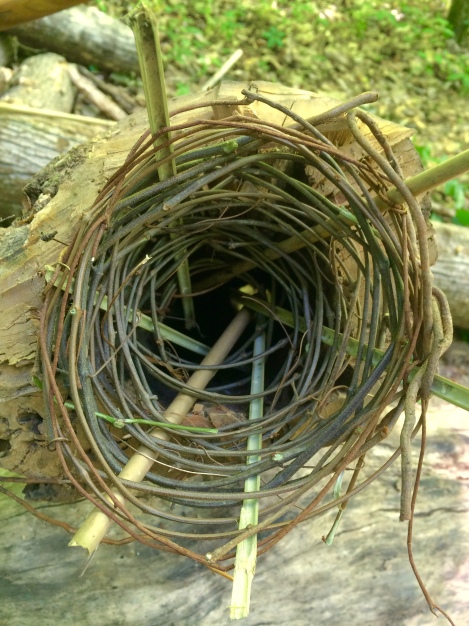
The woven funnel is inserted in one end of a hollow log with the other opening plugged to create a bushcraft crawfish trap.
Insects
The most abundant non-plant edible on our planet. I’m not a bug eater, but I’d eat them if my survival were on the line. A rule of thumb when eating insects is…
Red, orange-yellow, forget this fellow. Black, green or brown, wolf it down.
To kill parasites, cook the protein-packed creepy-crawlers.
Additional Resources:
- Forest Plants of the Southeast and Their Wildlife Uses
- Edible Wild Plants for Survival, (Not) So Fast! ~ Excellent article on Master Woodsman
- The Forager’s Harvest: A Guide to Identifying, Harvesting, and Preparing Edible Wild Plants
Keep Doing the Stuff of Self-Reliance,
Todd
P.S. – You can also keep up with the Stuff we’re Doing on Twitter, Pinterest, Google +, YouTube, Instagram, and Facebook… and over at the Doing the Stuff Network.
P.P.S – If you find value in our blog, Dirt Road Girl and I would appreciate your vote on Top Prepper Sites! You can vote daily by clicking here or on the image below. Check out all the other value-adding sites while you’re there… 
Thanks for Sharing the Stuff!
Copyright: Content on this site (unless the work of a third-party) may be shared freely in digital form, in part or whole, for non-commercial use with a link back to this site crediting the author. All links in articles must remain intact as originally posted in order to be republished. If you are interested a third-party article, please contact the author directly for republishing information.












